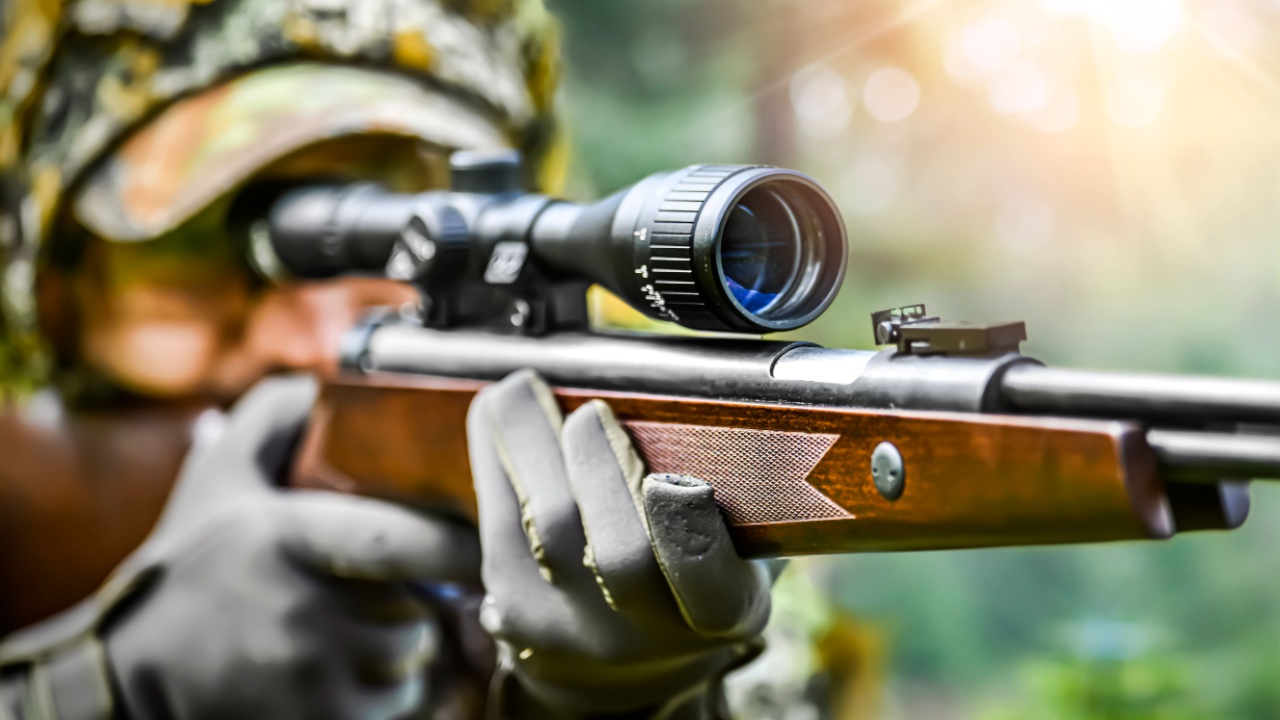The right to bear arms remains a topic of heated debate across the globe, but only a handful of nations constitutionally protect this right, with the United States being one of the most prominent. Yet, the freedom to own firearms in the U.S. is not absolute. Federal restrictions are in place for certain groups, and state laws further define circumstances under which firearms may be seized, particularly for individuals deemed at “extreme risk” or involved in domestic violence situations. For those committed to preparedness, understanding the laws around firearm ownership rights and restrictions is crucial. It’s not just about safeguarding your means of defense; it’s also about making sure you remain legally compliant with your rights intact. Here’s a closer look at states with specific laws regarding firearm seizure.
New Jersey

In New Jersey, the law mandates temporary disarmament for individuals identified as posing an “extreme risk,” with disarmament periods starting at 10 days and potentially extending indefinitely. While there’s no automatic disarmament for those with crime-related bans, those convicted of domestic violence must relinquish their firearms, although this doesn’t extend to those under restraining orders.
Oklahoma

Oklahoma currently lacks specific legislation for the removal of firearms from individuals considered “extreme risk.” The state’s laws do not facilitate firearm removal for crime-related possession bans or domestic violence cases, whether convictions or restraining orders. However, Oklahoma requires law enforcement to intervene and potentially disarm individuals during domestic violence emergency calls.
Massachusetts

Massachusetts enforces the temporary suspension of firearm rights for “extreme risk” cases, with durations ranging from 10 days up to a year. The state does not mandate firearm removal for crime-related bans or domestic violence cases, nor does it have laws specifically addressing firearm removal during domestic violence emergency calls.
Pennsylvania

Pennsylvania does not have established protocols for disarming “extreme risk” individuals or for those with crime-related bans or domestic violence backgrounds. The state does, however, require law enforcement to act in domestic violence emergencies, potentially involving firearm removal.
Delaware

Delaware’s laws mandate the removal of firearms from “extreme risk” individuals for periods ranging from 15 days up to a year. Unlike some states, Delaware does not enforce disarmament for crime-related possession bans or domestic violence cases, highlighting a specific focus on preemptive risk reduction without broader disarmament policies.
New Mexico

In New Mexico, “extreme risk” laws necessitate the temporary relinquishment of firearms, with periods extending from 10 days to a year. The state’s approach does not include disarmament for crime-related possession bans or domestic violence cases, indicating a targeted but limited strategy for firearm control.
Rhode Island

Rhode Island requires individuals considered “extreme risk” to temporarily surrender their firearms, with durations from 14 days to a year. The state also enforces firearm removal for those convicted of domestic violence or under restraining orders, presenting a comprehensive approach to reducing potential harm.
Michigan

Starting in 2024, Michigan will implement “extreme risk” firearm removal laws, with disarmament periods ranging from 14 days to a year. The state’s future approach does not include disarmament for crime-related bans or domestic violence cases.
New Hampshire

New Hampshire has no procedures for the removal of firearms from “extreme risk” individuals or for those with crime-related possession bans or domestic violence backgrounds. The state’s requirement for law enforcement intervention in domestic violence emergencies, however, underscores a commitment to immediate risk mitigation rather than broad disarmament policies.
New York

New York mandates temporary firearm rights suspension for “extreme risk” cases, lasting from 6 days up to a year. The state’s focused approach does not extend to crime-related bans or domestic violence cases, highlighting a targeted strategy for risk prevention.
Florida

Florida’s legislation permits the temporary removal of firearms from “extreme risk” individuals, with periods ranging from 14 days to a year. Despite this, the state does not enforce disarmament for crime-related possession bans or domestic violence cases. Florida’s lack of specific laws for firearm removal during domestic violence emergencies points to a targeted approach to firearm control.
Illinois

In Illinois, “extreme risk” laws necessitate the temporary forfeiture of firearms, ranging from 14 days to 6 months. While there’s no automatic seizure for those banned due to criminal activity or domestic violence convictions, an enforced removal is triggered by domestic violence restraining orders. This highlights the state’s focus on preventing potential harm.
Tennessee

Tennessee currently lacks “extreme risk” firearm removal laws and does not mandate seizure for criminal possession bans. However, the state enforces firearm removal for individuals with domestic violence convictions or under restraining orders.
Hawaii

Hawaii’s approach includes mandatory firearm rights loss for “extreme risk” individuals for up to a year. Unlike some states, Hawaii doesn’t enforce gun removal for crime-related bans or domestic violence scenarios unless it involves emergency calls.
California

California stands out for its comprehensive measures, removing firearms from “extreme risk” individuals for up to 5 years and extending seizure to those with crime-related bans or domestic violence issues.
Minnesota

Starting in 2024, Minnesota will enact “extreme risk” laws, with temporary firearm bans lasting from 14 days to a year. While there’s no provision for criminal possession bans, domestic violence convictions and restraining orders will result in enforced removal.
Louisiana

Louisiana does not specify “extreme risk” firearm removal and lacks laws for criminal bans and restraining orders. However, it enforces gun removal for domestic violence convictions.
Nevada

Nevada requires firearm forfeiture for “extreme risk” cases, crime-related bans, and domestic violence situations, so this state has a broad approach to firearm control. This comprehensive strategy underscores the importance of understanding state-specific laws for effective prepping and self-defense planning.
Nebraska

Nebraska currently has no “extreme risk” removal measures and doesn’t enforce seizure for criminal or domestic violence-related bans. The focus on law enforcement intervention during domestic violence emergency calls, however, illustrates the state’s commitment to immediate risk mitigation.
Colorado

Colorado mandates a temporary loss of firearm rights for “extreme risk” individuals, applying also to those with domestic violence convictions and restraining orders. With a high percentage of homicides involving firearms, the state’s regulations reflect a broader concern for community safety and the complexities of balancing personal preparedness with legal constraints.
Best Hunting Rifles of the Last 50 Years

Choosing the “best” hunting rifle is a pretty personal thing. We all have different opinions and preferences on what we like to hunt with. But still, over the last 50 years, there have been some remarkable weapons. Over the past half-century, the evolution of hunting rifles has seen so many innovations, catering to a wide range of needs from the casual deer hunter to the adventurous big-game enthusiast. What’s your favorite hunting rifle? Which weapons deserve a spot on this list?
- Read More: Best Hunting Rifles of the Last 50 Years
14 Most Versatile Hunting Cartridges

With almost 16 million hunters in the United States, and with such a huge range of game to hunt, the right rifle and the best cartridge is critical. We have some of the most diverse ecosystems on the planet, with animals ranging from tiny squirrels to gigantic moose. The cornerstone of a successful hunt lies in the hunter’s skill and knowledge but also in the choice of ammunition. The right cartridge can make all the difference, offering the power needed for a clean, humane kill without compromising the quality of the game.
- Read More: 14 Most Versatile Hunting Cartridges
38 Things Every Prepper Should Stockpile That Aren’t Water, Food, or Weapons

This list extends beyond the basic survival trio of water, food, and weapons. It’s a given that we need to stock up on water, food, and a way to defend ourselves and what we have. But what other things will you need in a survival situation? None of us truly knows what TEOTWAWKI will really look like, although most of us have theories we think most likely. But whatever the situation is, there are certain supplies that it just makes sense to have on hand, aside from the obvious trio I mentioned above.

